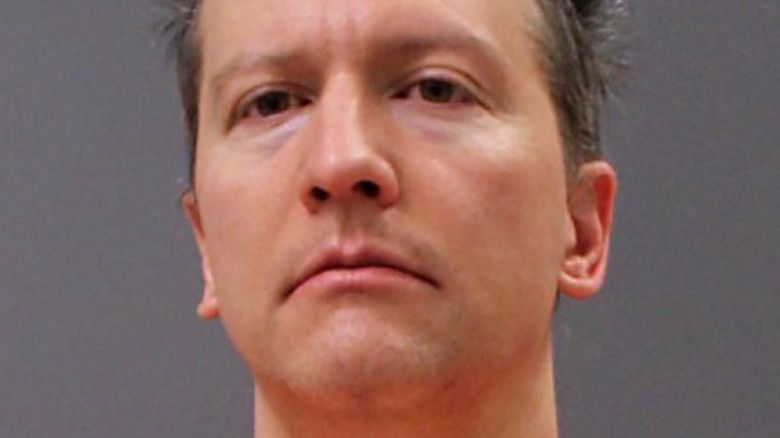What Derek Chauvin's Life Will Be Like In Prison
Capping a historic criminal trial, former Minnesota police officer Derek Chauvin was sentenced on June 25 to 22.5 years of prison for the murder of George Floyd, ABC News reported. As of this writing, the Minnesota Department of Corrections has yet to determine where Chauvin will serve his time, but during the trial, he was held at Minnesota Correctional Facility in Oak Park Heights.
Floyd's brother, Philonise Floyd said post-sentencing, "The legend will still live on. George isn't here, but his spirit is still here." Meanwhile, Floyd's nephew Brandon Williams argued Chauvin deserved a life sentence. "What kind of message are you sending to our country? ... That you can kill a man in cold blood and get a slap on the wrist? " he said.
But whether it's 22.5 years or a lifetime, chances are Chauvin won't have it easy in prison. Here's what his life inside might look like.
Derek Chauvin will likely not be in general population
We don't know exactly what Derek Chauvin's experience in prison will be like, but it's highly likely he won't be placed in general population due to safety concerns. As prison inmate Hannabal Shaddai, who is serving a life sentence at the maximum-security prison where Chauvin held during the trial, told Paradox, the ex-cop isn't "safe in any prison population." Shaddai theorized to Paradox in an early May phone call, "Best case scenario for him is he's going to get beat up a lot."
It's possible Chauvin's future in prison will mirror the "restricted housing unit" he stayed in during the trial. Minnesota Department of Corrections spokesperson Sarah Fitzgerald told CNN in late April, "He is on 'administrative segregation' status for his safety... Administrative segregation is used when someone's presence in the general population is a safety concern."
Fitzgerald confirmed details of Chauvin's experience to The Washington Post, with the outlet noting how he is allowed a "maximum of 10 photos, a radio and canteen food." The report continued, "He also can subscribe to periodicals and have three or fewer non-contact visits each week." As for the details of his cell? "Photos provided by the state show an empty cell in that unit has white cinderblock walls, slim rectangular windows, a metal toilet and sink and a thin mattress on a fixed bedframe," The Washington Post reported.


